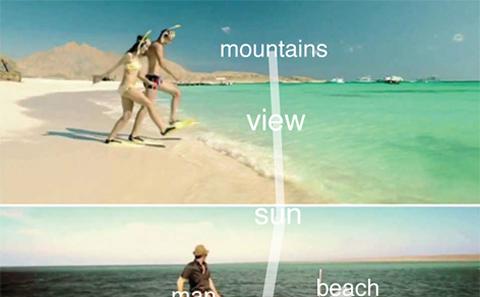Burak Arikan: Data Asymmetry - Exhibition Event

- Time:
- 11:00 - 15:00
- Date:
- 10 - 24 November 2016
- Venue:
- The Winchester Gallery, Winchester School of Art Park Avenue, SO23 8DL
For more information regarding this event, please email Professor Jussi Parikka at j.parikka@soton.ac.uk .
Event details
Information asymmetry was the primary driver of capital and power in the past century. When one side aggregated more or better information than the other, it gained power. Since the emergence of the internet and the web, information has grown increasingly abundant and far more people have gained access to formerly enclosed knowledge.
The projects in this exhibition address how the role of information asymmetry is being replaced by that of data asymmetry. Those who can aggregate, process, manipulate and sell data hold power. Our online and offline activities are captured by the services we use. Our metadata links to other data to build giant data structures known as graphs. The graph emerges as one particular mode of understanding this situation. When data points link to one another, the whole generates better intelligence and more value than the sum of its parts. From the social graph to the knowledge graph, the interest graph to the transactions graph, proprietary data networks drive the generation of new power. Graphs are used to make algorithmic predictions and optimizations about our future activities. As our behaviour is systematically forecasted, we have gradually entered a society of control that monitors, simulates and pre-mediates individual identities in relation to their data trails.
![Burak Arikan’s Monovacation [2013]](https://cdn.southampton.ac.uk/assets/imported/transforms/content-block/CB_RImg/13D3177409E94A35AA071FF8162AF0EC/monovacation-teaser-3x2_en.jpg_SIA_JPG_fit_to_width_INLINE.jpg)
To produce maps is a method of mapping power, addressing by visual means the asymmetry that defines our situation. Not only asking where we are, but inquiring: where is our data and who owns your data trail? This exhibition maps the shift from information asymmetry to data asymmetry, where aggregation of data is where contemporary power lies.
All of the works use maps of data, presented in different forms, connections and relations. The map is the data, and Arikan’s artistic work expands to the research and generation of new data that is put on display. In his words:
“MyPocket generates data from bank transactions, Monovacation from tourism commercials, Islam Republic Neoliberalism organises data collected about the urban infrastructure, Tense generates semi-random numbers and uses it as data. The map is the key guiding process that organises. It is not the topic of the works, but its method whether visibly or as an underlying principle. MyPocket is communicated primarily through the predictions, materialized in receipts. Its map is the process for prediction. Monovacation is communicated through a movie, the map is the process for editing the movie. Islam Republic Neoliberalism is communicated via overlaying a network map over a geographical map. Here the map is not a process, it is used for comparison, hence the comparison is the communication interface. Tense Series are communicated through kinetics of a diagram, the growth of a network over time. Its map is ephemeral and illegible, changing all the time, but its change is observable and subject of the communication.”
This exhibition by Burak Arikan, one of Turkey’s leading media artists, explores relations between data and transactions. The pieces raise questions of the predictability of ordinary human behavior with MyPocket (2008); revealing insights into the infrastructure of megacities like Istanbul as a network of mosques, republican monuments and shopping malls (Islam, Republic, Neoliberalism, 2012) ; remapping and organising recurring patterns in the official tourism commercials of governments with Monovacation (2012); exploring the growth of networks via visual and kinetic abstraction with Tense Series (2007-2012); and showcasing collective production of network maps from the Graph Commons platform. As the works emphasise, the aim of the Graph Commons is to empower people and projects through using network mapping, and collectively experiment with mapping as an ongoing practice.
The solo exhibition is Arikan’s first in the UK; previously he has exhibited at venues such as the Museum of Modern Art New York, Venice Architecture Biennale, São Paulo Biennial, Istanbul Biennial, Berlin Biennial, Ars Electronica and many others. In addition to the exhibition in the Winchester gallery, Arikan is organising a workshop on critical mapping and network graphs at the Winchester School of Art.
The exhibition is also part of the AHRC-funded Internet of Cultural Things-project and the Archaeologies of Media & Technology (AMT) research group at University of Southampton.
11.00 - 15.00, 10-24 November 2016 (Weekdays only)
Curated by Jussi Parikka